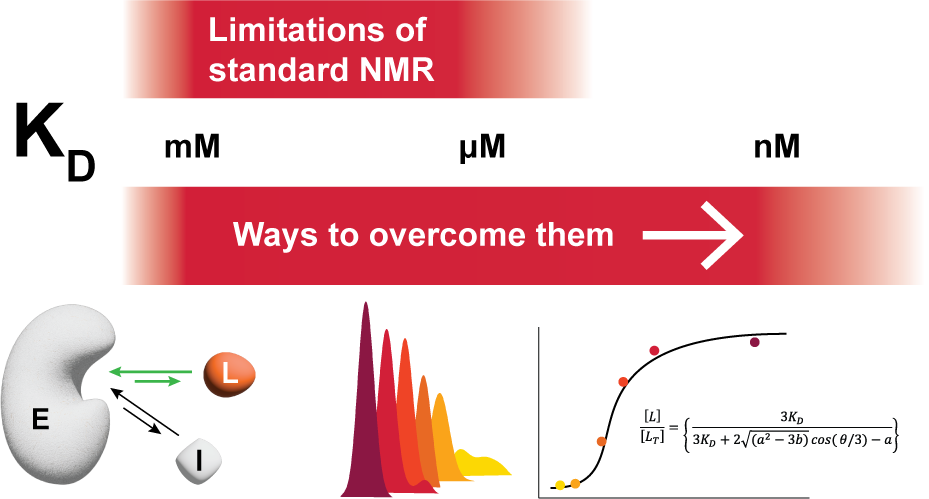Quantifying high affinities by NMR
Together with Claudio Dalvit we explored the limitations of NMR for determining the affinity of strong ligands. Read our learnings in a detailed review just published in Progress in NMR Spectroscopy.

NMR is well known as a prime method for studying molecular interactions, as it is one of the most sensitive biophysical methods, which can detect binding events over a huge range of affinities. Thus, it is widely used in biological and especially in pharmaceutical research, where target-ligand interactions are at the core of most projects.
However, when it comes to quantifying the exact affinity of an interaction, instead of just detecting binding, NMR is more limited. While NMR is able to quantify even very weak affinities (in the micromolar to millimolar KD range), determination of KD values below 1 micromolar is not possible in routine applications.
In this external pagereview, special cases where this is nevertheless possible are examined in detail, and a rather general method based on a competition assay is presented with which affinities with KD in the nanomolar range can easily be determined. This is a highly relevant affinity range, because typical drug molecules exhibit exactly such affinities. The method relies on a competition format, for which the mathematical treatment was established in the 1990s, and was now applied to the case of NMR competition assays, enabling precise determination of KD values.
This review was written together with Claudio Dalvit, an eminent figure in NMR-aided drug discovery, who initiated this collaboration. We are very thankful to him that he reached out to us for this project!
